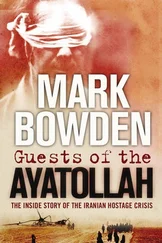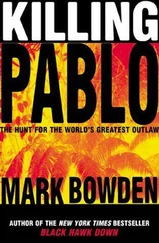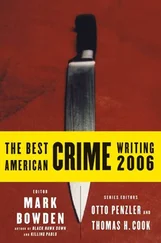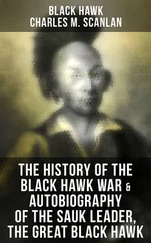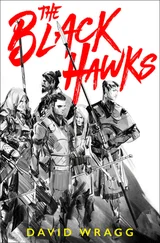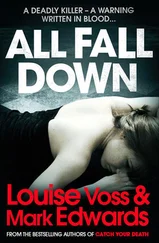Mark Bowden - Black Hawk Down
Здесь есть возможность читать онлайн «Mark Bowden - Black Hawk Down» весь текст электронной книги совершенно бесплатно (целиком полную версию без сокращений). В некоторых случаях можно слушать аудио, скачать через торрент в формате fb2 и присутствует краткое содержание. Город: New York, Год выпуска: 1999, ISBN: 1999, Издательство: Atlantic Monthly Press, Жанр: nonf_military, на английском языке. Описание произведения, (предисловие) а так же отзывы посетителей доступны на портале библиотеки ЛибКат.
- Название:Black Hawk Down
- Автор:
- Издательство:Atlantic Monthly Press
- Жанр:
- Год:1999
- Город:New York
- ISBN:978-0871137388
- Рейтинг книги:3 / 5. Голосов: 1
-
Избранное:Добавить в избранное
- Отзывы:
-
Ваша оценка:
- 60
- 1
- 2
- 3
- 4
- 5
Black Hawk Down: краткое содержание, описание и аннотация
Предлагаем к чтению аннотацию, описание, краткое содержание или предисловие (зависит от того, что написал сам автор книги «Black Hawk Down»). Если вы не нашли необходимую информацию о книге — напишите в комментариях, мы постараемся отыскать её.
Black Hawk Down — читать онлайн бесплатно полную книгу (весь текст) целиком
Ниже представлен текст книги, разбитый по страницам. Система сохранения места последней прочитанной страницы, позволяет с удобством читать онлайн бесплатно книгу «Black Hawk Down», без необходимости каждый раз заново искать на чём Вы остановились. Поставьте закладку, и сможете в любой момент перейти на страницу, на которой закончили чтение.
Интервал:
Закладка:
As they approached K-4 circle, they all braced themselves for another vicious ambush.
CHAPTER 16
Furious Attacks on a Second Convoy
December 1, 1997
AS SOON AS Staff Sgt. Jeff Struecker drove his humvee out of the American beachfront compound, gunfire erupted all around. They weren’t more than 80 yards out the back gate.
“Action left!” Sgt. Raleigh Cash screamed from the passenger seat of Struecker’s humvee at the head of the convoy.
Struecker’s turret gunner swung around to face five Somalis with weapons. Cash heard the explosion of gunfire and the zing and pop of rounds passing close. He had been taught that if you heard that crack, it meant the bullet had passed within three feet of your head. A zing, which sounded to him like the sound made when you hit a telephone pole guy wire with a stick, meant the bullet had missed you by a far margin.
The shots were answered by a roaring fusillade from the men in the convoy.
This column—four humvees and three five-ton flatbed trucks—had been hastily assembled to rescue the crew of pilot Mike Durant’s downed Blackhawk. A larger convoy already in Mogadishu also had been ordered to rescue Durant, along with pilot Cliff Wolcott and his crashed Blackhawk crew. But the original convoy had finally given up and started back to base after wandering through the city under heavy fire, absorbing terrible casualties.
The Durant crash site was less than two miles from the base, but Struecker realized already that he would have to fight street by street to get there. They were driving out into hell.
The brunt of the shooting was aimed at Struecker’s lead vehicle. A rocket-propelled grenade scraped across the top of his humvee and exploded against a concrete wall. The concussion lifted the wide-bodied vehicle up on two wheels.
Clearly these Somalis didn’t know how to stage a proper ambush. The correct way was to let the lead vehicle pass and suck in the whole column, then open fire. The unarmored flatbed trucks in the middle, loaded with cooks and clerks and other volunteers, made vulnerable targets. But even with undisciplined enemy gunfire, going forward would invite slaughter.
He told his driver to throw the humvee in reverse. Everybody behind him was just going to have to figure it out. They rammed the humvee behind them, and then that driver rammed the truck behind him. Eventually they all got the message.
Struecker got on the radio to the officer directing him from a helicopter circling high above the city:
“You need to find a different route!”
The answer came back: “Go back where you came from and turn right instead of left. You can get there that way.”
Struecker got the whole column back up to the gate, and this time he steered out the opposite way. He drove straight into a roadblock, a big one. The Somalis had thrown up dirt, junk, chunks of concrete and wire.
The convoy knew Durant’s Super 64 was somewhere directly ahead. Where he lay beside his helicopter, Durant had heard the sound of the .50-cal on Struecker’s humvee and figured the rescue column was coming in. This was minutes before Durant’s site was overrun and he was taken captive.
But the convoy couldn’t advance. Beyond the roadblock was a concrete wall surrounding the vast ghetto of huts and walking paths into which Durant had crashed. The humvees could roll right over the roadblock but Struecker knew the five-ton trucks wouldn’t make it. And even if they did, there wasn’t going to be any way through the concrete wall.
“You’ll have to find us another route,” Struecker radioed to his guide high above.
“There ain’t another route.”
“Well, you need to find one. Figure out a way to get there,” Struecker said.
“The only other route is to go all the way around the city and come in through the back side.”
“Fine. We’ll take it.”
It seemed to take forever for the five-tons to turn around on the narrow street. As they struggled to reverse direction again, most of the Rangers were out on the street, providing security in all directions. The trucks weren’t delicate about turning around. They rammed into walls and ground gears.
On one knee in the street, Cash took a whack to his chest that almost knocked him over. He knew he’d been shot, and he ran his hand inside his shirt, looking for blood. There was none. The bullet had skimmed off the front of his chest plate, tearing the straps of his load-bearing harness so that it was now hanging by threads.
Spec. Peter Squeglia, the company armorer who had donned fighting gear and volunteered for the convoy, sat with his M-16 pointed out the passenger side window of a truck, suddenly wondering what he was doing there. Only a year earlier, he had been bar-hopping with his buddies in Rhode Island trying to pick up girls.
A bullet clipped off the side mirror on the driver’s side. Squeglia pointed his rifle across the cab, right in front of the driver, and squeezed off several rounds.
When they were at last turned around, the convoy sped out a road that skirted the city to the southwest, driving through an occasional hail of AK-47 fire. At one rise they could actually see Durant’s crash site. It was less than a quarter of a mile away, down in a little valley, inside a squalid rag hut village. There was no way to get closer. They kept driving on their roundabout course until they came to the K-4 traffic circle, one of the major traffic intersections in southern Mogadishu.
Here they met up with the smoking, limping, bleeding remnants of Lt. Col. Danny McKnight’s lost convoy. It was a remarkable sight. The lead humvee was smoking and all of its tires were flat. The ones that followed looked almost as bad, and Struecker’s men were shocked to see that the vehicles were loaded with dead and shot-up Rangers.
The fresh convoy surrounded the battered vehicles, setting up a perimeter of fire while casualties on the worst of the vehicles were moved to the intact ones. They were less than a mile from the base, and less than a mile from Durant. One look at the lost convoy made it clear that they weren’t going to be able to break through Somalian roadblocks with just humvees and flatbed trucks.
So while the Command helicopter continued to reassure Delta soldiers who were holding off the mob around Durant’s downed Blackhawk that help was just minutes away, the two convoys were already headed the opposite way.
THE MEN IN THE LOST convoy had braced themselves for another vicious fight at K-4. But as they limped through the flaming barricades on Via Lenin, they saw instead, to their enormous relief, Jeff Struecker’s line of fresh vehicles and troops approaching them.
The lead humvee driven by SEAL Homer Nearpass, carrying John Gay and Howard Wasdin, with Wasdin’s bloody legs draped over the dash, could go no further. The dead and wounded were lifted from it and loaded on another humvee. Before they torched the battered vehicle, to prevent Somalis from looting it, Nearpass counted the bullet holes and Gay rooted around inside to find the handle of the broken knife that had saved his life by deflecting a bullet.
Squeglia saw his friend Sgt. Casey Joyce being lifted out of one of the vehicles, his eyes wide but empty, his mouth open. Joyce looked as if he was screaming, but he was dead. It really shook Squeglia. He and Joyce had been pals. Both of them were big guys, bulkier than most of the Rangers. They had shared a particular hatred for the daily morning run that seemed so easy for thinner Rangers. Now Casey was dead.
Then Sgt. Scott Galentine, normally a cheerful, funny guy, emerged from the back of a truck looking pale and shocked, still clutching his severed thumb in his bloody hand. The tough old master sergeant they called “Grizz,” Tim Martin, had been cut almost in half by a rocket-propelled grenade, but he was still, somehow, alive. Pfc. Adalberto Rodriguez was a bloody, broken mess, barely alive. The tough little ex-boxer, Sgt. Lorenzo Ruiz, had a breathing tube in his chest. On the litter he looked diminished, scared and small.
Читать дальшеИнтервал:
Закладка:
Похожие книги на «Black Hawk Down»
Представляем Вашему вниманию похожие книги на «Black Hawk Down» списком для выбора. Мы отобрали схожую по названию и смыслу литературу в надежде предоставить читателям больше вариантов отыскать новые, интересные, ещё непрочитанные произведения.
Обсуждение, отзывы о книге «Black Hawk Down» и просто собственные мнения читателей. Оставьте ваши комментарии, напишите, что Вы думаете о произведении, его смысле или главных героях. Укажите что конкретно понравилось, а что нет, и почему Вы так считаете.






